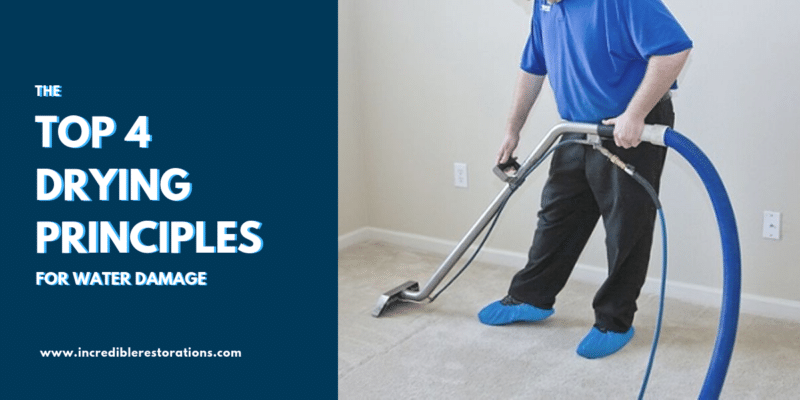So you left your bathroom tap running while you were rushing to answer a phone call, upon your return you find that THE SINK HAS OVERFLOWN causing quite a flood in your house.
The tile flooring and walls are wet, the carpeting outside the bathroom is wet, and so is some of your nearby furniture.
Now, if you are like most people you have grabbed all the towels in your house and have thrown them on the floor to absorb all the water you can.
You have plugged in your multi-speed household fan to help dry the areas and are wondering…
What you should do next?
Well, depending on the severity and extent of the water damage you will likely need to contract a property restoration company to professionally address the situation.
However, whether you try to do the drying yourself or you hire a company to do it, the basic principles of drying will be required.
The
Four Principles
of Drying:
1. REMOVE ALL EXCESS WATER
In order to get a head start on the drying process you need to ensure that all standing water is removed.
Otherwise, you will find that things just simply aren’t drying fast enough. 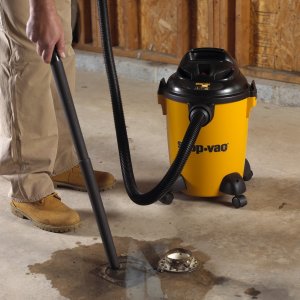
Use what you have available to soak up the water, a mop, towels, and of course a Shop-Vac can definitely help in this situation, so if you have one use it.
Property restoration companies will have their own versions of Shop-Vacs but with more suction power and greater capacity.
If you are dealing with carpet you should know that the underlay beneath the carpet acts as a sponge for water…
So even if the surface of the carpet appears dry-ish you can bet that the pad underneath is soaked.
If you feel comfortable doing so then peel back the carpet from the corners of the room and try to extract the water out of the underlay as well.
2. EVAPORATION
In this stage the aim is to remove the remaining water from the affected areas.
We can do so by evaporation (turning the water from its liquid state to vapour).
How do you do this?
Well a good place to start is that fan you pulled out earlier, it will help but again,
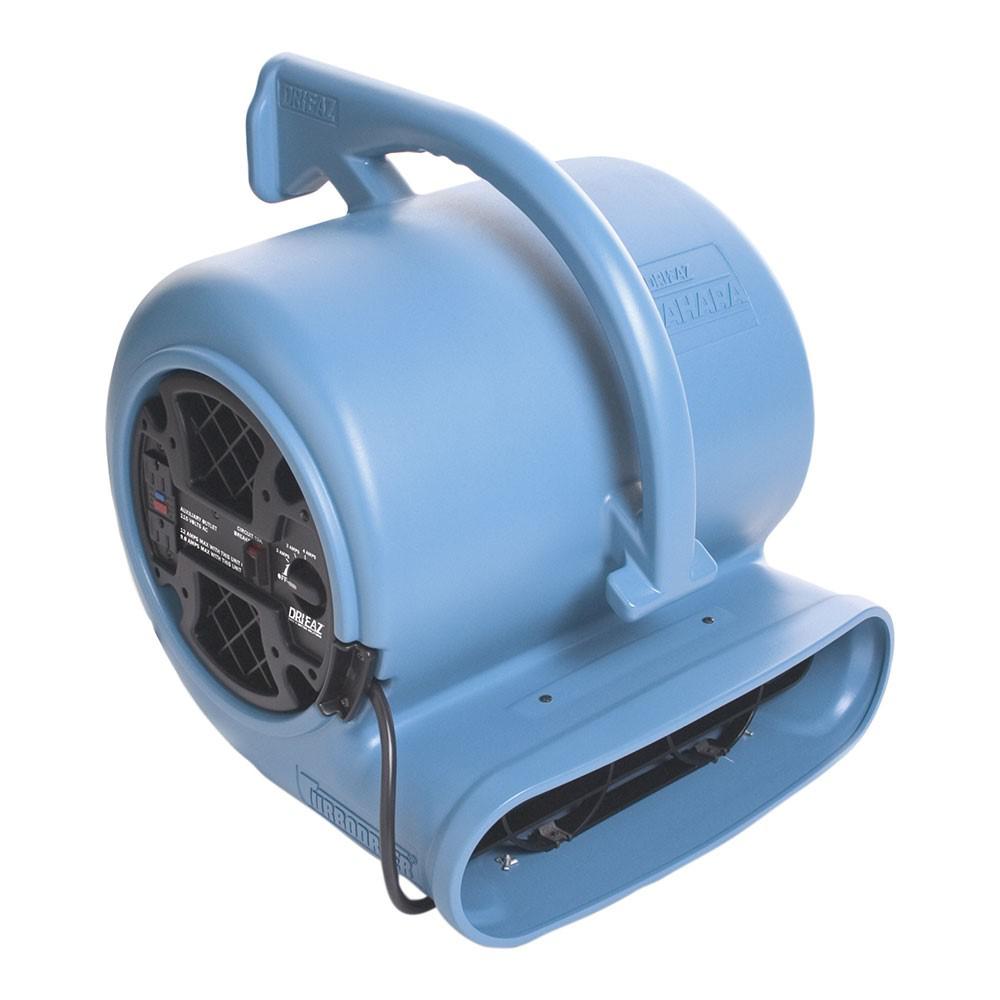 Depending on the severity of the situation you will likely need much more.
Depending on the severity of the situation you will likely need much more.
Property restoration companies have professional air-movers such as the Drieaz Sahara to help move large amounts of air.
As a basic rule of thumb, professionals would place one of these air-movers every 6-8 ft. of wall space.
That should give you a good idea as to how much drying power you will need in your particular situation.
3. DEHUMIDIFICATION
Now that you have started to evaporate some of the water that was once in your carpet you might ask yourself….
Where is all that humidity going?
Dehumidification simply put is the process of taking the humidity out of an environment.
This is a key step in the drying process as if not done correctly you could find condensation building up on your walls, ceilings, and windows etc (ie. more water to clean up)….
Potentially causing further water damage to your property. 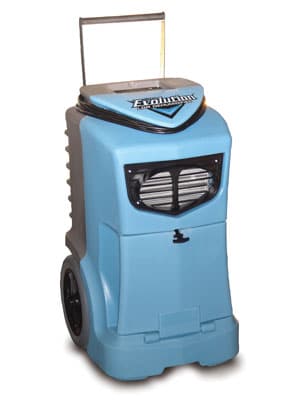
To start the dehumidification process try venting the humid air outside by opening windows and doors (this of course will only work if the humidity levels outside are lower than your indoor levels).
Property restoration companies use the aid of mechanical dehumidifier machines such as the Dri-Eaz Evolution which sucks in humid air, condenses it back into its water state, and then pumps the water out through a hose and into your sink or drain.
4. TEMPERATURE
The temperature inside your property will directly affect the drying process.
Proper temperature control will significantly increase the drying rate inside your property. 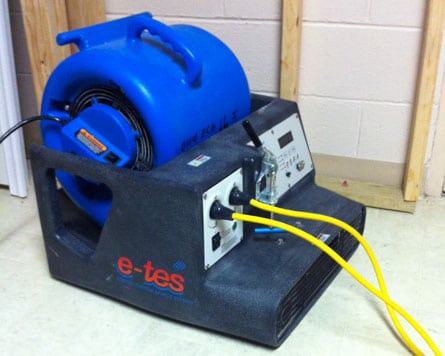
Turning up the heat in your home can help and should help assist to some extent but since it’s not controlled or directed towards the affected areas it’s less effective.
However, if you’re drying hardwood floors, you might need slightly different equipment.
The equipment that property restoration companies use such as the Sahara and Evolution will naturally give off heat while operating, heat that can be directed towards a certain target.
In cases where more heat is needed equipment such as the e-TES can also be used to reach the temperatures required.
So now you know the basic principles of drying, all four aspects play their own key role and when working together you will reach the optimum conditions for quickly drying your property.
As a closing note on drying you should know that in the property restoration industry we aim to have a property dry within a four day period and this is mainly due to limit the chances of microbial growth as well as reducing the chances of secondary property damage.
So whether you choose to dry your property yourself or hire a professional the aim should be to have your property dried within a 4 day period once the water source has stopped.

